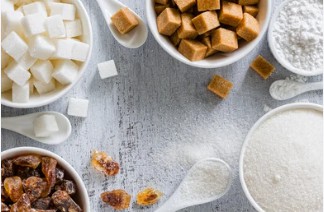They are not only the energy and fuel for plants and animals but also the intermediate products of metabolic processes and play a very important role in biological processes. The sugars in tea include monosaccharides, oligosaccharides, polysaccharides, and a small number of other sugars, which are one of the components of the taste and aroma of tea soup and are the main sweetness component of tea soup. Sugars are often added to tea beverages as additives to adjust the aroma and taste of tea beverages. The type and content of sugars in tea varies from one tea to another. Therefore, the analysis of sugars is an essential part of analyzing tea quality components.

The soluble sugars in tea account for about 4% of the dry matter, of which monosaccharides and disaccharides are the main components of tea soluble sugars, and the free monosaccharides in tea are very small. Since sugars are not the characteristic substances of tea, the research on sugars in tea at home and abroad is not as systematic and in-depth as polyphenols and caffeine. Our experts not only focus on the extraction, separation, and purification of tea polysaccharides and their physiological effects but also are very interested in analyzing tea sugars. We mainly test the total sugar content in tea according to national standards. Tea total sugar content test items include the following:
| Monosaccharides in Tea | Glucose, fructose, galactose, mannose, small amounts of arabinose, rhamnose, ribose, and xylose. |
| Disaccharides in Tea | Sucrose, maltose, cottonseed sugar, stachyose. |
| Polysaccharides in Tea | Cellulose, hemicellulose, starch, and pectin. |
| Small Amounts of Other Sugars in Tea | - |
As a recognized leader in tea testing, Lifeasible can help you develop the best solution for fast and reliable detection of total sugar content in tea. We have established clear and straightforward methods to detect total sugar content in tea, including:
Glycans, especially water-soluble sugars, are important components of tea quality. We provide stable, rapid, and widely applicable standard methods for the determination of total sugar content in tea based on HPLC for quantitative analysis, which is of great importance for establishing the quality of tea. Our efficient customer-focused service will guarantee the quality of your results and save you time and money. If you are interested in our solutions, please contact us for technical consultation and quotation.
Reference
Lifeasible has established a one-stop service platform for plants. In addition to obtaining customized solutions for plant genetic engineering, customers can also conduct follow-up analysis and research on plants through our analysis platform. The analytical services we provide include but are not limited to the following:
Get Latest Lifeasible News and Updates Directly to Your Inbox
Mechanisms Regulating Plant Chloroplast Biogenesis
April 15, 2025